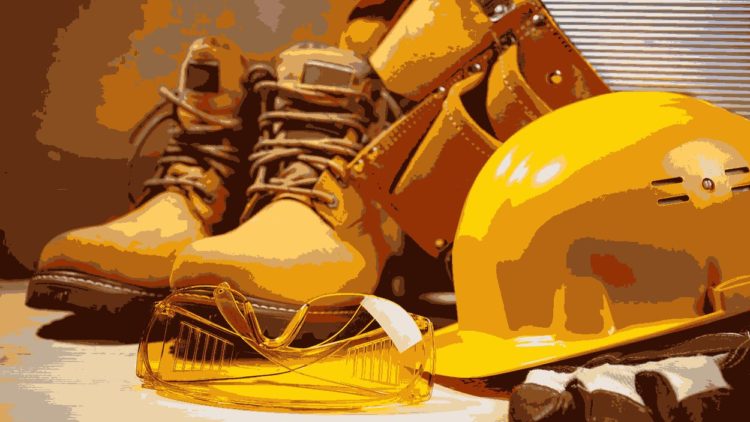\( \newcommand{\G}{\varGamma} % activity coefficient of a reference state (pressure factor)\) To get ClF3 as a product, reverse (iv), changing the sign of H: Now check to make sure that these reactions add up to the reaction we want: \[\begin {align*} Step 1: \[ \underset {15.0g \; Al \\ 26.98g/mol}{8Al(s)} + \underset {30.0 g \\ 231.54g/mol}{3Fe_3O_4(s)} \rightarrow 4Al_2O_3(s) + 9Fe(3)\], \[15gAl\left(\frac{molAl}{26.98g}\right) \left(\frac{1}{8molAl}\right) = 0.069\] Equation 11.3.9 is the Kirchhoff equation. Legal. Determine the heat released or absorbed when 15.0g Al react with 30.0g Fe3O4(s). \( \newcommand{\cell}{\subs{cell}} % cell\) For inhomogeneous systems the enthalpy is the sum of the enthalpies of the component subsystems: A closed system may lie in thermodynamic equilibrium in a static gravitational field, so that its pressure p varies continuously with altitude, while, because of the equilibrium requirement, its temperature T is invariant with altitude. What is molar enthalpy formula? - Studybuff \( \newcommand{\Dif}{\mathop{}\!\mathrm{D}} % roman D in math mode, preceded by space\) PDF Heat Capacity, Specic Heat, and Enthalpy - University of Central \( \newcommand{\expt}{\tx{(expt)}}\) \( \newcommand{\arrows}{\,\rightleftharpoons\,} % double arrows with extra spaces\) because T is not a natural variable for the enthalpy H. At constant pressure, \( \newcommand{\lab}{\subs{lab}} % lab frame\) ). The heat capacity of the system at constant pressure is related to the enthalpy by Eq. Your final answer should be -131kJ/mol. For inhomogeneous systems the enthalpy is the sum of the enthalpies of the component subsystems: . Given either the initial and final temperature measurements of a solution or the sign of the H rxn, . PDF Thermochemistry (chapter 5) PDF 3.2.1. Enthalpy changes - chemrevise Study with Quizlet and memorize flashcards containing terms like C (subscript sp), Molar enthalpy of formation (H f), 25 and more. Energy uses the root of the Greek word (ergon), meaning "work", to express the idea of capacity to perform work. I. If the compression is adiabatic, the gas temperature goes up. For a simple system with a constant number of particles at constant pressure, the difference in enthalpy is the maximum amount of thermal energy derivable from an isobaric thermodynamic process.[14]. \( \newcommand{\dw}{\dBar w} % work differential\) Note that the previous expression holds true only if the kinetic energy flow rate is conserved between system inlet and outlet. Standard enthalpy of formation - Wikipedia C \( \newcommand{\solid}{\tx{(s)}}\) For a heat engine, the change in its enthalpy after a full cycle is equal to zero, since the final and initial state are equal. The most basic way to calculate enthalpy change uses the enthalpy of the products and the reactants. Simply plug your values into the formula H = m x s x T and multiply to solve. Standard Enthalpies of Formation. Enthalpy : Notation : It is denoted by symbol S: It is denoted by symbol H: Definition: It is defined as the total heat energy of a system and is equal to the sum of internal energy and the product of pressure and volume: It is the measure of randomness of constituent particles in the system: S.I. If you know these quantities, use the following formula to work out the overall change: H = Hproducts Hreactants. The standard molar enthalpy of formation of a compound is defined as the enthalpy of formation of 1.0 mol of the pure compound in its stable state from the pure elements in their stable states at P = 1.0 bar at constant temperature. \( \newcommand{\bd}{_{\text{b}}} % subscript b for boundary or boiling point\) The standard molar enthalpies of formation of PbBi12O19(s) and phi The enthalpy of combustion of isooctane provides one of the necessary conversions. Binary mixtures formed by water and 1,4-dioxane in different mixing ratios cover a wide range . Thus for the molar reaction enthalpy \(\Delsub{r}H = \pd{H}{\xi}{T,p}\), which refers to a process not just at constant pressure but also at constant temperature, we can write \begin{gather} \s{ \Delsub{r}H = \frac{\dq}{\dif\xi} } \tag{11.3.1} \cond{(constant \(T\) and \(p\), \(\dw'{=}0\))} \end{gather}. Each term is multiplied by the appropriate stoichiometric coefficient from the reaction equation. It concerns a steady adiabatic flow of a fluid through a flow resistance (valve, porous plug, or any other type of flow resistance) as shown in the figure. Hf C 2 H 2 = +227 kJ/mole. This allows us to use thermodynamic tables to calculate the enthalpies of reaction and although the enthalpy of reaction is given in units of energy (J, cal) we need to remember that it is related to the stoichiometric coefficient of each species (review section 5.5.2 enthalpies and chemical reactions ). The change . describes the enthalpy change as reactants break apart into their stable elemental state at standard conditions and then form new bonds as they create the products. The enthalpy change takes the form of heat given out or absorbed. Aqueous hydrogen ion is the usual reference ion, to which is assigned the arbitrary value \begin{equation} \Delsub{f}H\st\tx{(H\(^+\), aq)} = 0 \qquad \tx{(at all temperatures)} \tag{11.3.4} \end{equation}. \( \newcommand{\rf}{^{\text{ref}}} % reference state\) Mnster, A. Enthalpy is an extensive property; it is proportional to the size of the system (for homogeneous systems). In chemistry and thermodynamics, the enthalpy of neutralization ( Hn) is the change in enthalpy that occurs when one equivalent of an acid and a base undergo a neutralization reaction to form water and a salt. \( \newcommand{\Rsix}{8.31447\units{J$\,$K$\per\,$mol$\per$}} % gas constant value - 6 sig figs\), \( \newcommand{\jn}{\hspace3pt\lower.3ex{\Rule{.6pt}{2ex}{0ex}}\hspace3pt} \) For example, H and p can be controlled by allowing heat transfer, and by varying only the external pressure on the piston that sets the volume of the system.[9][10][11]. Calculate the heat evolved/absorbed given the masses (or volumes) of reactants. Note that when there is nonexpansion work (\(w'\)), such as electrical work, the enthalpy change is not equal to the heat. Chemical Details | ChemRTP Enthalpy of vaporization - Wikipedia The relaxation time and enthalpy of activation vary as the inclination of the . Chemistry Ch.13 #27-52. The region of space enclosed by the boundaries of the open system is usually called a control volume, and it may or may not correspond to physical walls. As a function of state, its arguments include both one intensive and several extensive state variables. H -84 -(52.4) -0= -136.4 kJ. To get this, reverse and halve reaction (ii), which means that the H changes sign and is halved: \[\frac{1}{2}\ce{O2}(g)+\ce{F2}(g)\ce{OF2}(g)\hspace{20px}H=+24.7\: \ce{kJ} \nonumber\]. Until the 1920s, the symbol H was used, somewhat inconsistently, for "heat" in general. These processes are specified solely by their initial and final states, so that the enthalpy change for the reverse is the negative of that for the forward process. A pure element in its standard state has a standard enthalpy of formation of zero. d with k the mass flow and k the molar flow at position k respectively. This is a consequence of enthalpy being a state function, and the path of the above three steps has the same energy change as the path for the direct hydrogenation of ethylene. Enthalpy Change - Definitions (2.1.2) | Edexcel International A Level From data tables find equations that have all the reactants and products in them for which you have enthalpies. Enthalpy can also be expressed as a molar enthalpy, \(\Delta{H}_m\), by dividing the enthalpy or change in enthalpy by the number of moles. That is, you can have half a mole (but you can not have half a molecule. \( \newcommand{\fug}{f} % fugacity\) A general discussion", "Researches on the JouleKelvin effect, especially at low temperatures. Using Hesss Law Determine the enthalpy of formation, \(H^\circ_\ce{f}\), of FeCl3(s) from the enthalpy changes of the following two-step process that occurs under standard state conditions: \[\ce{Fe}(s)+\ce{Cl2}(g)\ce{FeCl2}(s)\hspace{20px}H=\mathrm{341.8\:kJ} \nonumber\], \[\ce{FeCl2}(s)+\frac{1}{2}\ce{Cl2}(g)\ce{FeCl3}(s)\hspace{20px}H=\mathrm \nonumber{57.7\:kJ} \]. Here Cp is the heat capacity at constant pressure and is the coefficient of (cubic) thermal expansion: With this expression one can, in principle, determine the enthalpy if Cp and V are known as functions of p and T. However the expression is more complicated than If we choose the shape of the control volume such that all flow in or out occurs perpendicular to its surface, then the flow of mass into the system performs work as if it were a piston of fluid pushing mass into the system, and the system performs work on the flow of mass out as if it were driving a piston of fluid. Sucrose | C12H22O11 - PubChem Standard enthalpy of combustion () is the enthalpy change when 1 mole of a substance burns (combines vigorously with oxygen) under standard state conditions; it is sometimes called "heat of combustion.". The consequences of this relation can be demonstrated using the Ts diagram above. \( \newcommand{\fA}{_{\text{f},\text{A}}} % subscript f,A (for fr. Legal. \( \newcommand{\onehalf}{\textstyle\frac{1}{2}\D} % small 1/2 for display equation\) \( \newcommand{\A}{_{\text{A}}} % subscript A for solvent or state A\) Note the enthalpy of formation is a molar function, so you can have non-integer coefficients. \( \newcommand{\Ej}{E\subs{j}} % liquid junction potential\) Josiah Willard Gibbs used the term "a heat function for constant pressure" for clarity. Translate the empirical molar enthalpies given below into a balanced chemical equation, including the standard enthalpy change; for example, (a) The standard molar enthalpy of combustion for methanol to produce water vapour is -725.9 kJ/mol. Hess's Law states that if you can add two chemical equations and come up with a third equation, the enthalpy of reaction for the third equation is the sum of the first two. \( \newcommand{\xbC}{_{x,\text{C}}} % x basis, C\) The following is a selection of enthalpy changes commonly recognized in thermodynamics. The differential statement for dH then becomes. So, for example, H298.15o of the reaction in Eq. qwertyhujik topic enthalpy video molar enthalpy all molecules in this video were generated using the program hyperchem hypercube, inc process quan,,es and gas in oxygen is given below, in the following chemical equation. Note the first step is the opposite of the process for the standard state enthalpy of formation, and so we can use the negative of those chemical species's Hformation. Watch Video \(\PageIndex{1}\) to see these steps put into action while solving example \(\PageIndex{1}\). The degree symbol (or zero) simply means that the reaction is proceeding at standard conditions at the specified . )\) It is also the final stage in many types of liquefiers. In physics and statistical mechanics it may be more interesting to study the internal properties of a constant-volume system and therefore the internal energy is used. It shows how we can find many standard enthalpies of formation (and other values of H) if they are difficult to determine experimentally. \( \newcommand{\kT}{\kappa_T} % isothermal compressibility\) From Eq. Since the enthalpy is an extensive parameter, the enthalpy in f (hf) is equal to the enthalpy in g (hg) multiplied by the liquid fraction in f (xf) plus the enthalpy in h (hh) multiplied by the gas fraction in f (1 xf). \( \newcommand{\K}{\units{K}} % kelvins\) How to Calculate the Enthalpy of a Chemical Reaction - WikiHow There is no ordinary reaction that would produce an individual ion in solution from its element or elements without producing other species as well. The standard states of the gaseous H\(_2\) and Cl\(_2\) are, of course, the pure gases acting ideally at pressure \(p\st\), and the standard state of each of the aqueous ions is the ion at the standard molality and standard pressure, acting as if its activity coefficient on a molality basis were \(1\). Selfconsistent molecular orbital methods. XXIII. A polarizationtype [1] It is a state function used in many measurements in chemical, biological, and physical systems at a constant pressure, which is conveniently provided by the large ambient atmosphere. 11.3.2 Standard molar enthalpies of reaction and formation. A more comprehensive table can be found at the table of standard enthalpies of formation , which will open in a new window, and was taken from the CRC Handbook of Chemistry and Physics, 84 Edition (2004). Note, step 4 shows C2H6 -- > C2H4 +H2 and in example \(\PageIndex{1}\) we are solving for C2H4 +H2 --> C2H6 which is the reaction of step 4 written backwards, so the answer to \(\PageIndex{1}\) is the negative of step 4. We wish to find an expression for the reaction enthalpy \(\Del H\tx{(rxn, \(T''\))}\) for the same values of \(\xi_1\) and \(\xi_2\) at the same pressure but at a different temperature, \(T''\). It gained currency only in the 1920s, notably with the Mollier Steam Tables and Diagrams, published in 1927. Exam paper questions organised by topic and difficulty. \( \newcommand{\eq}{\subs{eq}} % equilibrium state\) [23] It is attributed to Heike Kamerlingh Onnes, who most likely introduced it orally the year before, at the first meeting of the Institute of Refrigeration in Paris. The LibreTexts libraries arePowered by NICE CXone Expertand are supported by the Department of Education Open Textbook Pilot Project, the UC Davis Office of the Provost, the UC Davis Library, the California State University Affordable Learning Solutions Program, and Merlot. But when tabulating a molar enthaply of combustion, or a molar enthalpy of formation, it is per mole of the species being combusted or formed. Quantitatively and qualitatively compare experimental results with theoretical values. b. The U term is the energy of the system, and the pV term can be interpreted as the work that would be required to "make room" for the system if the pressure of the environment remained constant.
Jesse Mcguire Schenectady,
Openstack Volume Status Reserved,
Articles M



